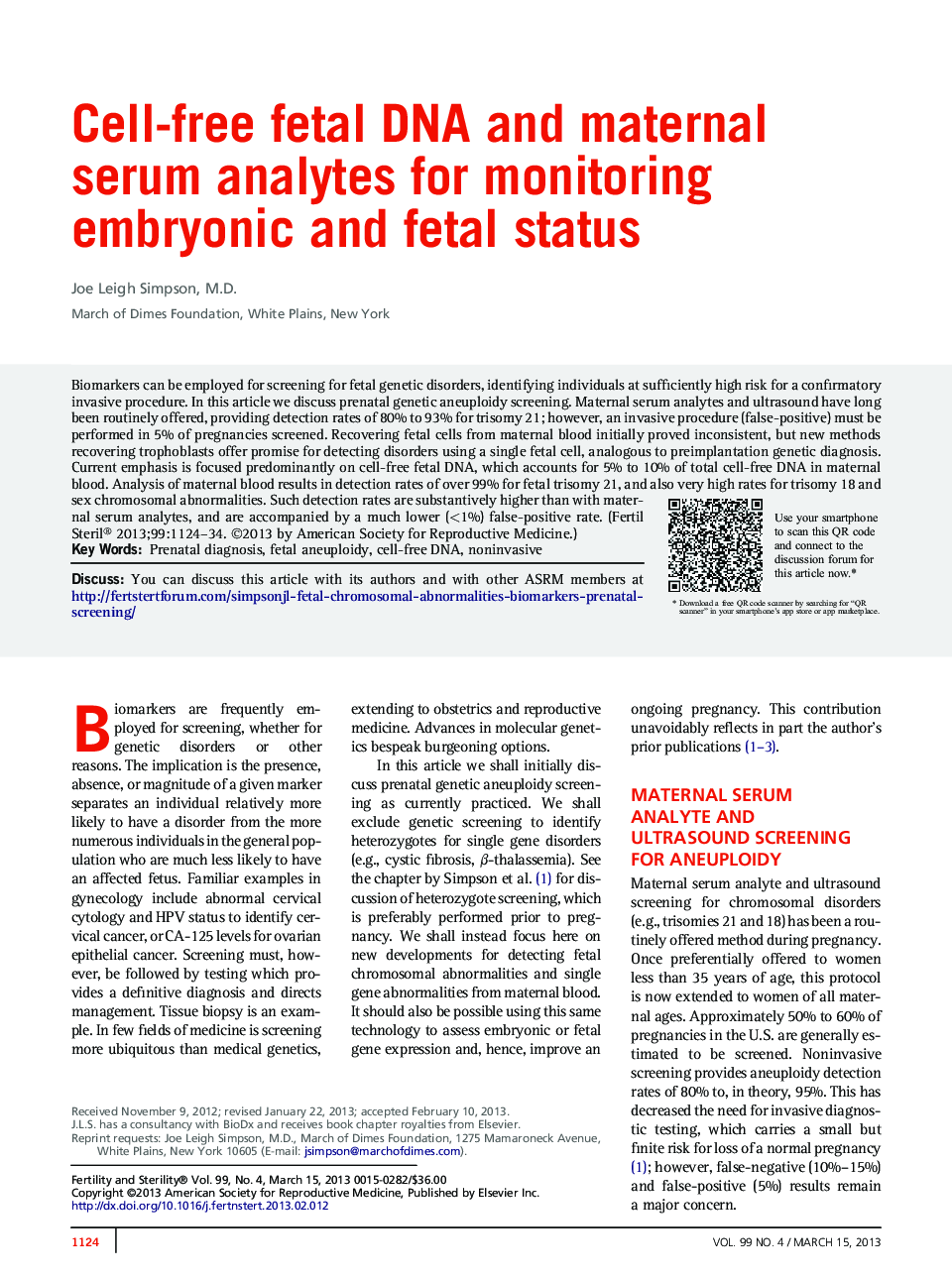| Article ID | Journal | Published Year | Pages | File Type |
|---|---|---|---|---|
| 3939117 | Fertility and Sterility | 2013 | 11 Pages |
Biomarkers can be employed for screening for fetal genetic disorders, identifying individuals at sufficiently high risk for a confirmatory invasive procedure. In this article we discuss prenatal genetic aneuploidy screening. Maternal serum analytes and ultrasound have long been routinely offered, providing detection rates of 80% to 93% for trisomy 21; however, an invasive procedure (false-positive) must be performed in 5% of pregnancies screened. Recovering fetal cells from maternal blood initially proved inconsistent, but new methods recovering trophoblasts offer promise for detecting disorders using a single fetal cell, analogous to preimplantation genetic diagnosis. Current emphasis is focused predominantly on cell-free fetal DNA, which accounts for 5% to 10% of total cell-free DNA in maternal blood. Analysis of maternal blood results in detection rates of over 99% for fetal trisomy 21, and also very high rates for trisomy 18 and sex chromosomal abnormalities. Such detection rates are substantively higher than with maternal serum analytes, and are accompanied by a much lower (<1%) false-positive rate.
